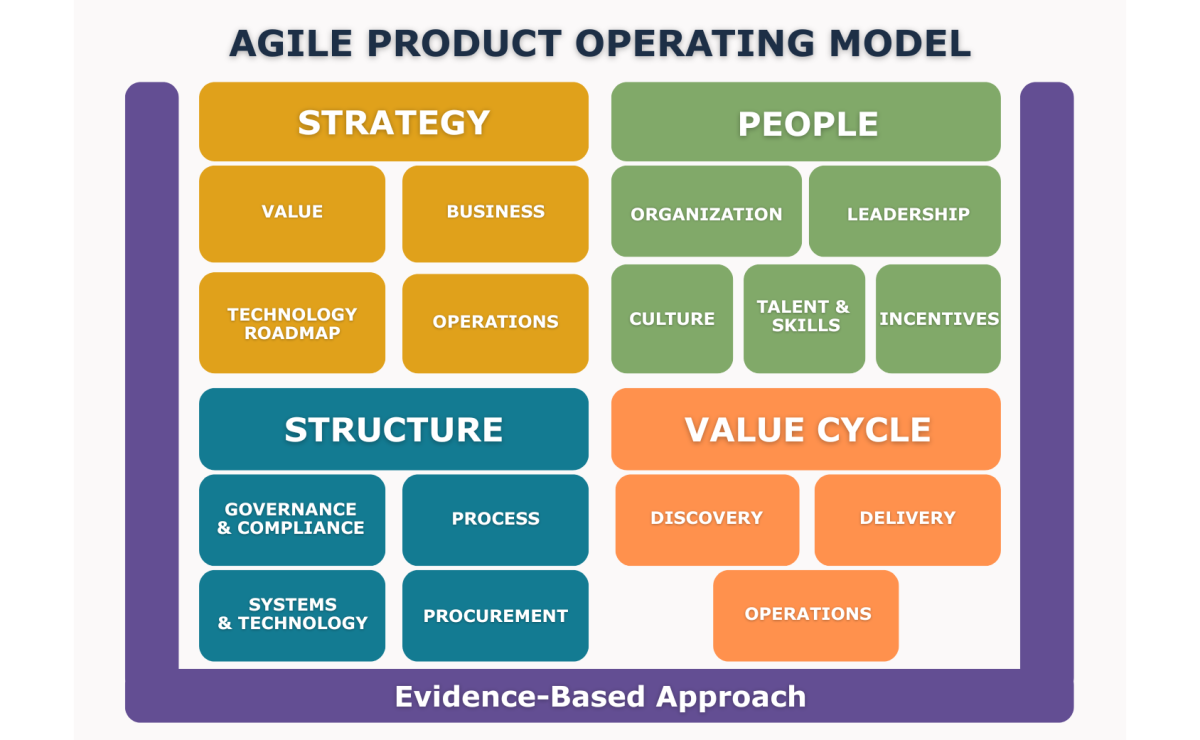The Agile Product Operating Model
Traditional operating models are no longer enough in an era of constant change and rising complexity. By combining the ideas of modern product management, agile delivery, and Evidence-Based Management, organizations can build a product operating model that aligns clearly with their digital goals. This is where the Agile Product Operating Model comes into play.
The Agile Product Operating Model is designed to help organizations deliver value continuously, adapt faster and thrive in uncertainty.
Image

The Agile Product Operating Model (APOM) comprises the four areas of:
- Strategy - The Why - A clear, transparent description of the elements of value (economics), business, technology, and operations
- People - The Who - Defining how people are organized and developed and the culture and incentive model within which they work
- Structure - The Rules and Tools - The necessary governance, third party contracting, process and supporting systems and technology.
- Value Cycle - The practices that enable agile discovery, product delivery, and operations and support
Resources:
What did you think about this content?
Included In
Learning Series
The Agile Product Operating Model is designed to help organizations deliver value continuously, adapt faster and thrive in uncertainty.


